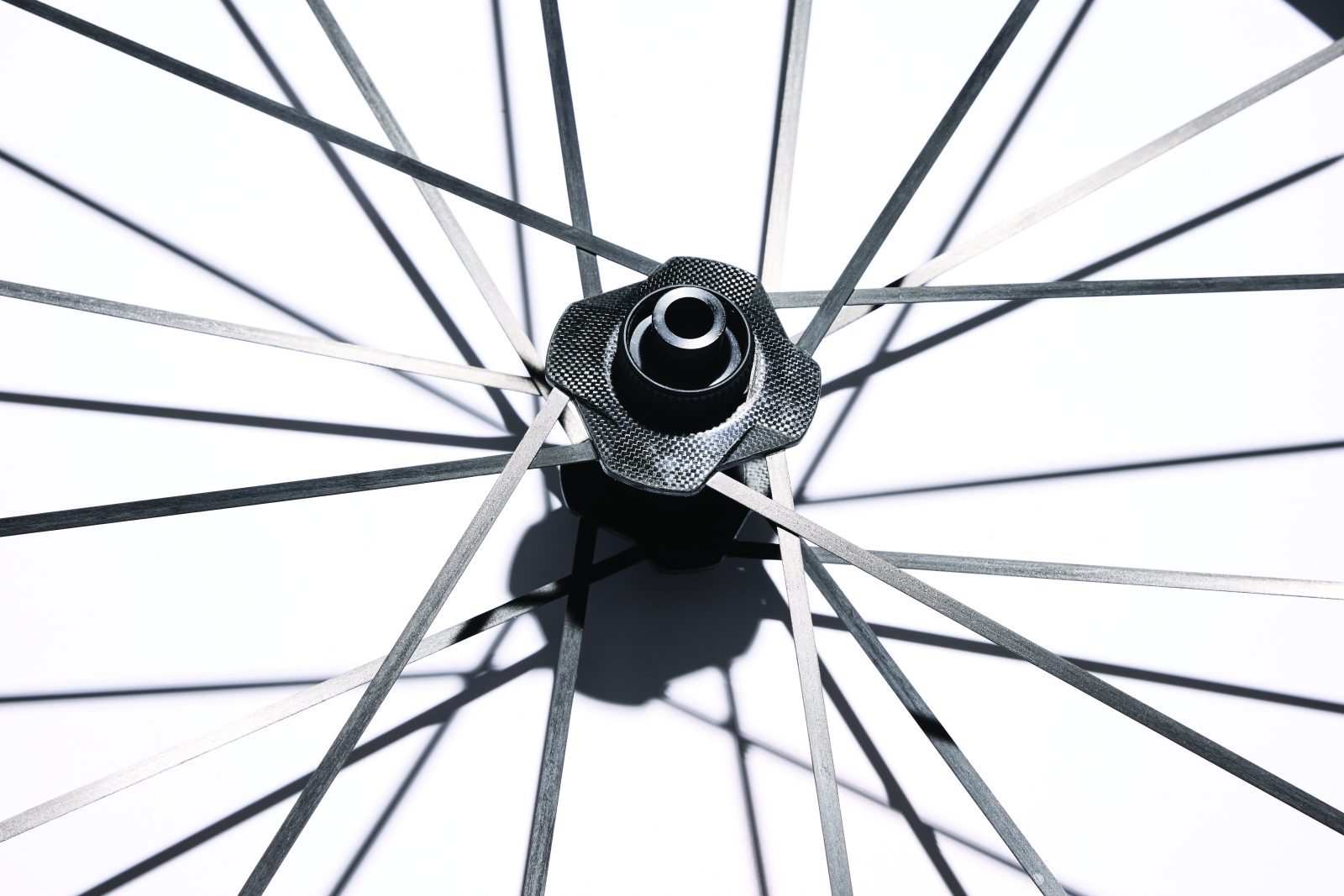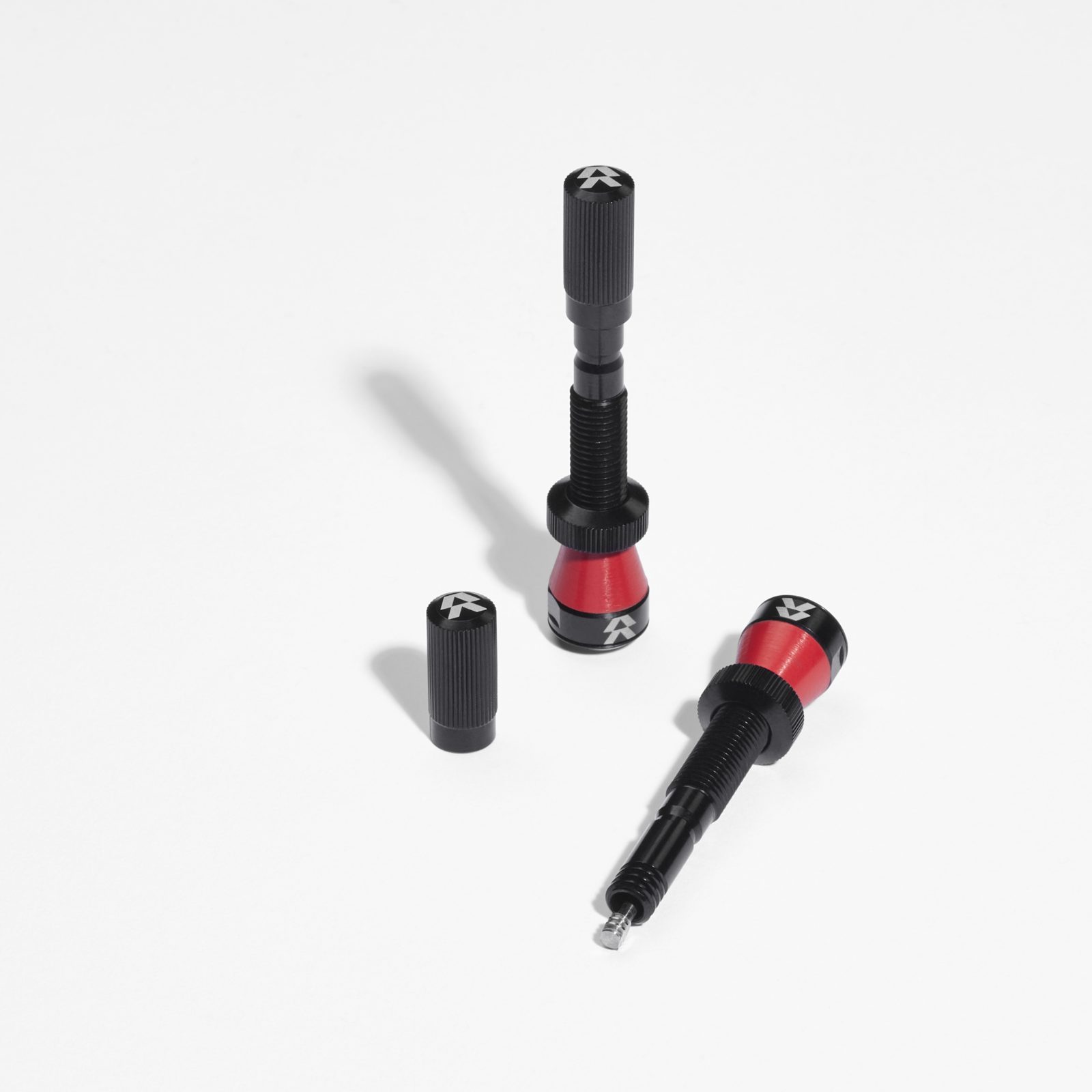The move to disc brakes might be complete, but the developments in road bike wheels keep on rolling.
Words: Laurence Kilpatrick Photography: Tapestry
The wheel may be a 5,000-year-old invention but designers are still finding ways to make it lighter, faster, safer and more stable. In recent years, the focus for road bike wheels has been on making the switch from rim brakes to disc brakes. Before that, it was all about refining rim shapes to make them more aerodynamic.
Now the market is looking at perfecting the interface between tyre and rim while squeezing out every drop of performance gains in terms of grams shaved and watts saved. Manufacturers are also taking a hard look at their environmental impact and exploring ways of making their products sustainable as well as desirable.
Cyclist talked to some of the industry’s leading figures to get an insight into the main changes that are happening in the world of wheels.
Rim widths
The advent of disc brakes not only helped to make road bikes stop quicker, but helped them go quicker as well, and one of the ways it achieved this was by making rims wider.
Jeff Schneider, global head of product at Giant and Cadex wheels, says that the development of wider rim widths was in progress even before disc brakes came along: ‘Companies such as Shimano and Bontrager were trying to widen out their rims, but it got to the point where a rim brake calliper just didn’t have the leverage.’
Now that rims no longer need to pass through rim brake callipers they can be made wider, which means they can accommodate larger-volume tyres without getting a ‘lightbulb’ profile shape that can make tyres squirm while cornering. Bigger tyres can be run at lower pressures, which improves compliance, rolling resistance and keeps more rubber in contact with the road for grip. A wider rim also means the transition from tyre to rim is smoother, which can improve aerodynamics.
Tom Marchment, product manager at Hunt Wheels, says the increase in rim width has fundamentally improved rider experience: ‘There has been a far larger increase in the percentage change in rim width than tyre width. So you’re getting more support at the base of the tyre. Therefore at lower pressures you’ve got more support closer to the bed of the tyre, which increases the feeling of stable cornering.’
So now the question is: what is the correct width? Harrison Macris, co-founder and CEO of Princeton CarbonWorks, says, ‘Whenever the industry investigates a trend, we swing hard one way and we push it and we push it and then, eventually, the pendulum swings back and we coalesce around certain parameters.’
It seems the industry has experimented with ever wider rim widths but is finding that it is possible to go too wide. As Macris says, ‘If you employ a crazy rim width and then the rider loses confidence in cornering – with a super-wide tyre at low psi – then they won’t be fast.’
Jake Pantone, vice president of product and brand at Enve, is another who believes the industry is now running out of reasons to go wider: ‘We’ve done some prototyping of wider widths but it seems that for tyres around 28mm to 32mm, the 25mm internal width is the point where diminishing returns starts to kick in. We don’t see any real demand from the data side to go wider than that.’
Hookless rims
The rise of tubeless tyres has been the catalyst for the development of hookless rims – a system that has been used on motor-vehicle and mountain bike wheels for years but which is still new for the road bike market. A hookless rim simply does away with the protruding hooks of the rim walls that help to hold standard clincher tyres in place. Instead, the hookless rim wall is flat, with the tubeless tyre being held in place by pressure alone.
The benefits are that rims can be made lighter because there is less material, and more cheaply because of a simpler manufacturing process. And the way the tyre sits in the rim gives a profile that can be more aerodynamic. The issues with hookless are that fitting tolerances have to be very fine, and tyre/rim compatibility exact, to prevent the tyre blowing off the rim – and there have been high-profile cases of this happening even in the pro peloton.
‘There are holdouts in the industry that are anti-hookless, but it’s here to stay,’ says Schneider at Cadex. ‘The benefits are obvious. You can make a stronger, lighter and more robust rim by going hookless because you’re not breaking the continuous flow of the fibre through the rim.’
Pantone at Enve agrees: ‘If you’re building a proper tubeless rim, there is no reason for a hook to exist. If the tyre is constructed properly, it will never interface with the hook bead. The only thing keeping a tyre on a rim after the tyre has lost its pressure is actually the press fit of the bead onto the bead seat.’
However, Macris at Princeton CarbonWorks is not convinced that hookless is the application best suited for a sport where amateur riders often perform their own maintenance.
‘Take cars. They have a machine that stretches that metal bead onto the wheel under incredible force. That’s necessary for hookless to work safely. We need to be able to fix these bikes by hand. I would not bet the farm on hookless technology.’The WorldTour has splashed some fuel on this particular fire. Thomas De Gendt’s crash in the 2024 UAE Tour and Johannes Adamietz’s at Strade Bianche while riding hookless wheels caused the UCI to open an investigation into the technology. Aside from issuing some noncommittal recommendations to follow ISO standards, though, further action has been delayed until at least the 2025 season. Hookless’s role in those incidents is still hotly debated.
Environmental issues
Carbon fibre is, in many ways, the perfect material for making wheels. It’s light, stiff and can be moulded into complex shapes. But one problem with it is its sustainability – once a thermoset carbon wheel has reached the end of its useful life it’s only fit for landfill. However, a saviour may have arrived in the form of thermoplastics – a different kind of carbon composite.
Matius Lauryssens, product manager for Bontrager, says, ‘Thermoset carbon, once it has been chemically cured, can never soften again. Not so for thermoplastics. They can be melted repeatedly without degrading. And it’s a 20-second process.’
Unlike thermoset carbon, thermoplastics are fully recyclable. What’s more, the usual method of curing carbon requires long periods in an oven at high temperatures, and prior to curing the prepreg carbon needs to be stored at well below 0°C, so the environmental benefits of avoiding these processes are clear. But what of the performance criteria of thermoplastics?
Macris from Princeton says, ‘I like them because they’re tough, but I don’t know if a thermoplastic is going to give us the stiffness that we want.’
Lauryssens acknowledges that to achieve the same stiffness as a thermoset wheel, Bontrager needs to use more thermoplastic material: ‘Sure, the material is a little softer, but we can achieve the same stiffness. It allows us the flexibility to make complex shapes.’
Extra material means extra weight, but it does seem that thermoplastics could provide benefits in terms of vibration absorption. Pro team Lidl-Trek rode Bontrager’s thermoplastic wheels at Paris-Roubaix and, according to Lauryssens, the feedback was very positive: ‘They took the weight penalty in order to get that amazing vibration and impact reduction.’
Variable rim depths
Wavy rim profiles first appeared with Zipp’s NSW range, and have subsequently appeared in different forms on a handful of other brands. As well as providing a certain aesthetic allure, the design’s claim is to be aerodynamic while providing better stability in crosswinds.
It’s worth noting the technology hasn’t been universally adopted and is not without its detractors. Pantone at Enve says, ‘Sawtooth rims don’t add any value or stability other than that they look cool.’ Schneider at Cadex agrees, saying, ‘It’s more of a marketing piece than a real story.’
Hunt doesn’t produce any variable depth rims, but development engineer Patrick Brown is less dismissive, and characterises the design as one that must live with its own flaws: ‘There are aero benefits and drawbacks side by side.’
Princeton CarbonWorks is one brand that has adopted variable rim depths, getting into a legal dispute along the way with Zipp over a possible patent infringement – although this has been concluded, to the industry’s benefit: ‘Now that the trial is over, we’re seeing more variable-depth wheels come to market.’ says Macris.
How numerous these releases are will give us an idea of how the industry rates the efficacy of variable depth rims, though that will be tempered by the realities of style’s purchasing power over substance.
Ratcheting up the ratchet
The popularity of ratchet freehubs is gathering pace thanks to the expiry of DT Swiss’s star ratchet patent, meaning other brands can now include them in their designs. Most freehubs currently use a pawl system, which relies on small, sprung prongs – pawls – projecting off the freehub body and engaging with teeth machined into the inside of the rear hub shell. The ratchet system, meanwhile, uses two spring-loaded metal rings with angled teeth that engage when the hub is turned in one direction, but slide over each other when the hub is turned the other way.
The potential benefits of ratchets include more points of contact (therefore lower stress on each of them), greater simplicity, easier servicing and improved reliability thanks to having fewer bits to go wrong.
‘I like ratchets because there’s a larger engagement surface,’ says Harrison Macris, CEO of Princeton CarbonWorks, which offers both types of hubs. ‘Playing around with diameters and materials can save weight too.’
For Patrick Brown, development engineer at Hunt, ratchet technology is well positioned: ‘It’s future-proofed against modern, wider gravel bike ratios while offering some more versatility.’
Jake Pantone at Enve says he can’t fault a good ratchet system, but cost can be an issue: ‘You need premium materials to manufacture a good ratchet.’
In short, pawl freehubs aren’t desperately in need of replacement. When well made, they work perfectly efficiently, but with ratchets offering benefits in terms of performance and durability, we’re sure to see more of them in hubs to come.
The death of the home mechanic
The developments in undrilled rim beds are providing benefits for manufacturers and riders, but they do throw up technical hurdles of their own. By creating rims without the need for spoke holes, the rim beds can be smooth, so don’t require rim tape, and the whole structure can be stiffer and potentially lighter. Taken to its extreme, a fully integrated wheel system combines spokes, monocoque rim and hub into one continuous form, as seen in the Syncros Capital SL wheelset released last year.
‘It’s an impressive engineering feat,’ says Hunt’s Patrick Brown, ‘and they have a light weight for that depth. We are also looking at monocoque hub systems but with truable spokes. There’s a balance to be struck.’
By that he means fully integrated wheels leave no room for adjustments or repairs, something that isn’t good for the user or the environment. Jake Pantone at Enve agrees: ‘The trade-offs are too great. Ride quality suffers and for every wheel that comes out well, another four get scrapped.’
For Jeff Schneider at Cadex, continuous wheel systems represent a step back in terms of design, which is why Cadex went for a halfway house design (pictured), where the spokes and hubshell are integrated but the spokes remain trueable at the rim. This aims to save weight while retaining practicality.
‘Otherwise you can’t manage stiffness, which is so critical,’ says Schneider. ‘You’re giving up control of your own product.’



